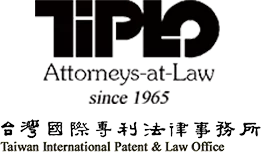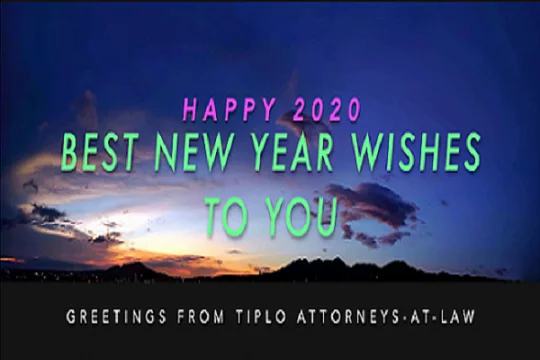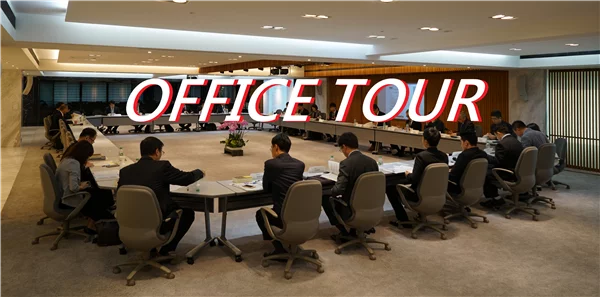Latest proposed amendment to Taiwan Patent Act passed legislative readings on 31 May 2013 and entered into force as of 13 June 2013.
E130603Y1・E130531Y1 Jun. 2013(E163)
Highlights of Amendment 2013:
1. Invention/utility model patent application dual filing regime evolved. (Article 32, Article 41)
(1) Un-interruption of right to patent protection. (Under the current Patent Act, i.e. Amendment (2011), utility model patent right is deemed non-existent ab initio once applicant declares to retain the invention patent.)
★ The applicant will need to make a dual filing statement on the utility model patent application and the invention patent application respectively upon filing.
Revision of Article 32
The current Patent Act, i.e. Amendment (2011) which came into force on 1 January 2013, explicitly provides the legal basis of dual filing (i.e. an invention patent application and a utility model patent application are filed on the same day by the same applicant for the same creation) where, in operation, the utility model patent right shall be deemed non-existent ab initio once the applicant chooses to retain the invention patent right on Taiwan IPO's relevant notice. In other words, under current Patent Act, the patented subject matter granted a utility model patent followed by an invention patent is practically denied protection prior to the publication of the invention patent. That is to say, for the purpose of enforcing patent right against an infringer known to a utility model patentee before an invention patent granted on the same subject matter is published, the patentee must choose the utility model patent over the invention patent and, as a result of which choice, forfeit a 10-year patent term. Also, where the utility model patentee has licensed or assigned the utility model to a third party, must he/she return the royalty payment or consideration received from the licensee(s) or the assignee once the utility model patent is deemed non-existent ab initio as a result of his/her choice to retain the invention patent? Further, if the patentee has successfully sued an infringer based on the utility model patent right, must he/she return the award or settlement money received? These issues regarding the operation of the dual filing regime had been widely disputed before the Amendment (2011) was promulgated.
Amendment (2013) will resolve the above issues by materializing un-interruption of right to protection where the utility model patent shall remain valid and enforceable in good standing before the publication date of the invention patent if the applicant chooses to retain the invention patent on Taiwan IPO's relevant notice. Under Amendment (2013), however, the applicant must, upon filing, make a dual filing statement on the invention patent application and the utility model patent application respectively. If the applicant fails to make the required statement on either or both of the applications, the invention patent will not be issued.
(2) Under Amendment (2013), an applicant seeking monetary award alleging infringement of a dual-filing patented creation will be required to choose and identify the basis of claim: either damages based on the utility model patent or compensation based on the laid-open invention patent.
Revision of Article 41
As the applicant's right to protection of his/her creation under the dual filing regime will continue uninterrupted by utility model patent right followed by invention patent right, allowing the applicant to claim based on both of the utility model patent and the invention patent will be allowing unjust enrichment. Amendment (2013) therefore requires the applicant's expressed choice of the basis of claim, either damages based on the utility model patent or compensation based on the laid-open invention patent.
2. Claimable damages calculation (Article 97)
(1) Under Amendment (2013), “reasonable amount of royalty” simply serves as a basis of assessing and calculating damages. The damages may be awarded in an amount in excess of the royalty received under patent licensing.
Under the current Patent Act, “reasonable amount of royalty” is adopted as one of the three methods of estimating and calculating the amount of claimable damages. It is stated therein that the claimable damages may be “the equivalent amount of royalty received from licensing the invention patent.” This provision, however, is likely to cause a potential infringer to not seek patent licensing, so as to avoid any additional cost (such as, auditing expense) that would be generally incurred to a patent licensee under patent licensing. Therefore, there may be an unfair circumstance where the additional cost becomes the claimant’s burden, such as, litigation expense and attorney’s fee. In other words, the potential infringer, even if found engaged in any infringing activity and sued therefor, is likely to be ordered to pay damages in an amount up to the royalty he/she would have to pay under licensing, while the claimant would have to pay the expenses arising from initiation of an infringement action. To remedy the above-mentioned possible circumstance adverse to claimant, Amendment (2013) takes the second part of the 2nd paragraph of Section 139 of the German Patent Law as reference, indicating that claimable damages assessed based on the royalty amount will not necessarily amount to the royalty amount received from licensing the patent right. That is to say, the damages may be awarded in an amount more than the royalty received from licensing to ultimately impede and eradicate infringement.
(2) Reinstatement of punitive damages in triple amount as a ceiling
The provision with respect to triple punitive damages as the maximum awarded damages had been included in the Patent Act before the enforcement of the current Patent Act, but was removed therefrom on the grounds that it is more coherent to the British and American law system and different from the purpose of actual loss recovery commonly sought in Taiwan patent regime. Such provisions in connection with punitive damages, however, are commonly present in other IP related laws of Taiwan, such as, Copyright Act, Trade Secrets Act, and Fair Trade Act. In addition, before the punitive damages provision was removed from the current Patent Act, the courts in Taiwan had been determining the existence/non existence of intentional infringement and establishing the details of infringement occurrences in accordance with the practices and experiences they had formulated and accumulated through past cases, and had never abused the punitive damages provision to award damages in excessive amount. Also due to intellectual property rights being intangible in essence, that would cause difficulty in estimating the amount of actual damages. In view of the foregoing reasons, the provision regarding triple punitive damages as a ceiling is reinstated in Amendment (2013).
3. Presentation of utility model patent technical report as an alert (Article 116)
A utility model is granted a patent upon completion of only formality examination without going through substantive examination that testifies the patentability thereof. Amendment (2013) provides that the holder of a utility model patent must present a utility model technical report as an alert for exercising his/her patent right. Any holder of utility model patent must not exercise his/her patent right without presenting such a report as an alert, whish is to avoid abusive issuance of warning notices. However, presentation of the technical report is not a prerequisite of initiating a lawsuit with the court.
|
Newly legislated revision |
Current provision | |
| Article 32 |
Article 32 Dual filing on the same creation Where an applicant files on the same day an invention patent application and a utility model patent application on the same creation, the applicant shall upon filing present a statement of dual filing with each of the applications. If the utility model patent application is granted before an admission decision is issued on the invention patent application, the Specific Patent Agency shall notify the applicant to select to retain one of the two patent applications filed within a specified time limit. The invention patent application shall not be granted if the applicant fails to present the statement of dual filing upon filing the application or fails to make the selection within the specified time limit. Where the applicant selects to retain the invention patent application according to the preceding paragraph, the utility model patent right granted shall cease to exisit from the publication date of the invention patent application. |
Article 32 One creation applied for invention patent and utility model patent Where an applicant files an invention patent application and a utility model patent application for the same creation on the same date, if the utility model patent application has been granted before a decision of admission is issued on the invention patent application, the Specific Patent Agency shall notify the applicant to select one patent application within a specified time limit. The invention patent application shall not be granted if the applicant fails to make the selection within the specified time limit. Where the applicant select the invention patent application according to the provision set forth in the preceding paragraph, the utility model patent right shall be deemed non-existent ab initio. |
|
Article 41 |
Article 41 Effect of the laying open of application After the laying-open of an invention patent application, where the applicant has given a written notice to a person of the content of the invention claimed in the patent application, the applicant may, after the publication of the invention patent application, claim appropriate compensation from that person if that person continues to exploit the invention commercially after receiving the notice and prior to the publication of the said patent application. The claim provided in the preceding paragraph may be asserted against the person who having knowledge about the laying open of an invention patent application continues to exploit that invention commercially prior to publication of the patent application. The right to claim compensation provided in the preceding two paragraphs does not affect the exercise of other rights except in the case of dual filing under Article 32 of this Act, where the utility model patent application has been granted, the applicant will be allowed to exercise either the right to claim compensation or the utility model patent right. |
Article 41 Effect of the laying open of application After the laying-open of an invention patent application, where the applicant has given a written notice to a person indicating the content of the invention claimed in the patent application, the applicant may, after the publication of the said patent application, claim appropriate compensation against the said person if he/she continues to exploit the invention commercially after receiving the notice and prior to the publication of the said patent application. A claim referred to in the preceding paragraph can also be made where a person who knows that an invention patent application has been laid open but continues to exploit the invention commercially prior to publication of the patent application. The right to claim compensation as provided in the preceding two paragraphs does not affect the exercise of other rights. |
|
Article 97 |
Article 97 Calculation of damages Damages claimed in accordance with the preceding Article may be calculated based on one of the following: 1. Article 216 of the Civil Code. However, where there is no means of proof to establish the damages alleged, patentee may claim the balance of the profit normally expected through exploiting the patent less the profit earned through exploiting the same after infringement; 2. the profit earned by the infringer as a result of the infringement of the patent; 3. The reasonable amount of royalty that may be received from licensing the patent right as a calculating basis. Subject to the preceding paragraph, where the infringement is proven intentional, the court may, on claimant’s request, assess and award the damages in an amount in excess of the amount claimed up to triple the amount of damages proven, after taking into account the details of the infringement occurrence. |
Article 97 Calculation of damages Damages claimed in accordance with the preceding Article may be calculated according to any of the following methods: 1. the method provided in Article 216 of the Civil Code; patentee may claim damages based on the amount of the balance derived by subtracting the profit earned through exploiting the patent after infringement from the profit normally expected through exploiting the same patent, if no method of proof can be produced to prove the damage suffered; 2. the profit earned by the infringer as a result of patent infringement; 3. the equivalent amount of royalty that may be collected from exploiting the invention patent under licensing. |
|
Article 116 |
Article 116 Presentation of technical report When exercising a utility model patent, the patentee must not issue a notice as an alert without presenting a utility model patent technical report. |
Article 116 Presentation of technical report When exercising a utility model patent, the patentee shall present a utility model patent technical report as an alert. |
|
Article 159 |
Article 159 Date of implementation The date on which this Act takes effect shall be decided by the Executive Yuan. The amendments of 31 May 2013 to this Act shall come into force on the date of promulgation. |
Article 159 Date of implementation The date on which this Act takes effect shall be decided by the Executive Yuan. |














